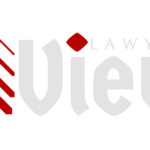Caveat: I don’t intend my audience to Portmanteau of conundrum neither to put them in portmanteau of indecipherability but to make my lecture unambiguous, fathoming or apprehending and deepen your knowledge, that’s my aim and objective.
Institute of Advanced Legal Studies in London and the New York City Bar Association Law Library defined legal writing: “Legal writing involves the analysis of fact patterns and presentation of arguments in documents such as legal memoranda and briefs. One form of legal writing involves drafting a balanced analysis of a legal problem or issue. Another form of legal writing is persuasive, and advocates in favor of a legal position.”
Legal writing involves the analysis of fact patterns and presentation of arguments in documents such as legal memoranda and briefs. Legal writing includes the legal patterns of writing long essay, thesis and project etc.One form of legal writing involves drafting a balanced analysis of a legal problem or issue.
Furtherance, another form of legal writing is persuasive, and advocates in favor of a legal position. (Wikipedia,2019). “Legal drafting” can mean the preparation of any written legal document–a motion, a letter, a brief, a memo, or a contract.
Oxford Advanced Learner’s Dictionary 8 Edition, defined drafting as ” a rough written version of something that’s yet in its final form”. Black’s Law Dictionary 9th Edition, defined Legal drafting as ” the practice, technique, or skill involved in preparing legal documents”.
The study shows that legal research works are still much being conducted under the doctrinal method. Wikipedia,2020. Legal Research is the process of locating an answer to an unknown legal problem, verifying the law, and reading cases.Legal research can also be defined as “the process of identifying and retrieving information necessary to support legal decision-making.
Sometimes, legal research can help determine whether a legal issue is a “case of first impression” that is unregulated or lacks legal precedent. Legal research is generally the process of finding an answer to a legal question or checking for legal precedent that can be cited in a brief or at trial.
Lawyers and law teachers use the phrase in this way all the time: “Draft a brief” or “draft a letter.”Jun 7, 2006. Google. Edit your writing ruthlessly, omitting unnecessary words and rewriting for clarity, very important.
Careful proofreading is particularly important in legal writing. Spelling, punctuation, or grammatical errors in a document submitted to the court, opposing counsel or a client can undermine your credibility as a legal professional.
Legal drafting has branches which will be stated herein but we will not discuss them because of time limit.
Legal Drafting
Branches of legal drafting
• NOTICES Drafing
• Legal Acknowledgement Drafting
• Adoption Drafting
• AFFIDAVIT Drafting
• Agreement Drafting
• Apartment Sales Drafting
• Apprenticeship Drafting
• Arbitration Drafting
• Arbitration Act 1940 Drafting
• Arbitration and Conciliation Act, 1996 Drafting
• Assignment Drafting
• Bail Drafting
• Bonds Drafting
• CIVIL PLEADINGS Drafting
• COMPANY Drafting
• Compromise Drafting
• Consumer Drafting
• CO-OPERATIVE SOCIETY Drafting
• DISHONOUR OF CHEQUE Drafting
• DIVORCE-NUILTY OF MARRIAGE AND JUDICIAL
SEPERATION Drafting
• EASEMENTS Drafting
• EMPLOYMENT Drafting
• FAMILY Drafting
• FAMILYFOREIGN COLLOBORATION Drafting
• FOREIGN COLLOBORATION AND JOINT VENTURE
Drafing
• GIFT Drafting
• GUARANTEE Drafting
• GUARDIANSHIP Drafing
• HIRE PURCHASE Drafting
• INJUNCTIONS Drafting
• INSOLVENCY Drafting
• LABOUR Drafting
• LEASE Drafting
• LICENCE Drafting
• MAINTENANCE Drafting
• MARRIAGE Drafting
• MENTALLY ILL PERSONS Drafting
• MOTOR ACCIDENT CLAIM Drafting
• NEGOTIABLE INSTRUMENTS Drafting
• PARTITION Drafting
• PARTNERSHIP Drafting
• PATENTS Drafting
• POWERS OF ATTORNEY Drafting
• PUBLIC INTEREST LITIGATION Drafting
• RECEIPTS Drafting
• RECTIFICATION Drafting
• RELEASE Drafting
• RENT Drafting
• RESCISION Drafting
• RESOLUTIONS Drafting
• REVENUE Drafting
• SALES Drafting
• SERVICE CASES Drafting
• SHIPPING Drafting
• SHOPPING Drafting
• SOLE SELLING AGENCY Drafting
• SURRENDER Drafting
• TESTAMENTARY MATTERS – Copy Drafting
• TORTS Drafting
• TRADE MARKS Drafting
• TRANSPORT Drafting
• TRUSTS Draftkng
• WILLS Drafting
• Cyber Law Drafting
• HINDU MARRIAGE ACT Drafting
• URROGATE PARENTING AGREEMENT Drafting
• WRIT Drafting
• MORTGAGE Drafting.
Writing a Long Essay ( project) A long essay is any essay that tends to be longer than three pages or 3,000 words or more. Of course, the definition of a long essay will differ from one classroom to another, depending on the age and level of the students. Google Writing long essay/ project.
Writing a legal article/ legal research.
Legal research shall be used for explanation herein. Drafting is a verse topic that’s the aim of using legal research/ legal article to make it brief.
The requirements for an international law journals/articles are:
Title, name of the author, affiliation, abstract , general introduction, background of the study, aims and objectives, statement of problems, Research Methodology, research questios, definition of terms, literature review, main body, recommendations, conclusion, foote note and references.
Title could mean the name of your article, paper or your research work eg. ‘Legal assessment of bankers’ and customers’ rights in Nigeria’.
Name could mean the name of the Author eg., ‘Ofodum Chukwunonso
Affiliation: this is the company/ institution the writer is with, example, your university or the law firm you are working with could be your affiliation.
Abstract: abstract is the summary of your research work: eg., Title, brief introduction, statement of the problem, aims and objectives, findings, recommendations and conclusion.
General introduction: this is the introduction of your work generally.
Background of the Study: this is the section to detail your background, history, origin and everything you know about your research work.
Note, choosing your research topic is base on what you like, what’s researchable and what you feel like you can research on.
Aims and objectives: this section deals with the purpose of writing your research work and what you want it to achieve.
Statement of Problems: this section is where you state the problems that made you to embark on the journey of your research work.
Research Methodology: This is method you want to use to embark on your research work example, qualitative method, quantitative method, doctrinal method, primary method, secondary method etc.
Research Questions: this is a section where we ask questions we will later answer in every research work. Sometimes we take this questions to outsiders who are our research work is related in their field to answer before embarking on our research. The answers aids much especially when we’re using primary Methodology
Definition of terms: this deals with the one after the other explanation of some vital words used in your research work for easy understanding.
Literature review: this section deals with the reviewing of your research work eg., Talking about your research work with reference to other previous works done in related work. Note, some works are researchable and some topics are not. What this means is that nobody has written any article on it. You’re only allowed to embark on journey of only researchable work in education in general. Personally, I have written over 12 research work in different field for people I have researched in education, social science, one pure science, agriculture, law environmental science etc. I’m a theorist in social science during my post graduate research work, the theory is titled, Psycho Social individuality Theory, another name for it is ICON Theory.
Main body: this deals with the major work of your research work, where you discuss everything like merits and demerits, main content etc. with references. Note what makes it research work is reference, without reference it’s an ordinary article not a research work.
Recommendations: this section deals with your recommendations; what you recommended for your readers to learn as a solution to your findings.
Conclusion: this section deals with conclusion of all your work at the end of your research work.
Footnote: this is footnoting your research work/ referencing your research work on the foot of every page of your work. It’s Microsoft Word can do this, take note.
Reference or Bibliography: this is where we reference our work at the end of the research work.






